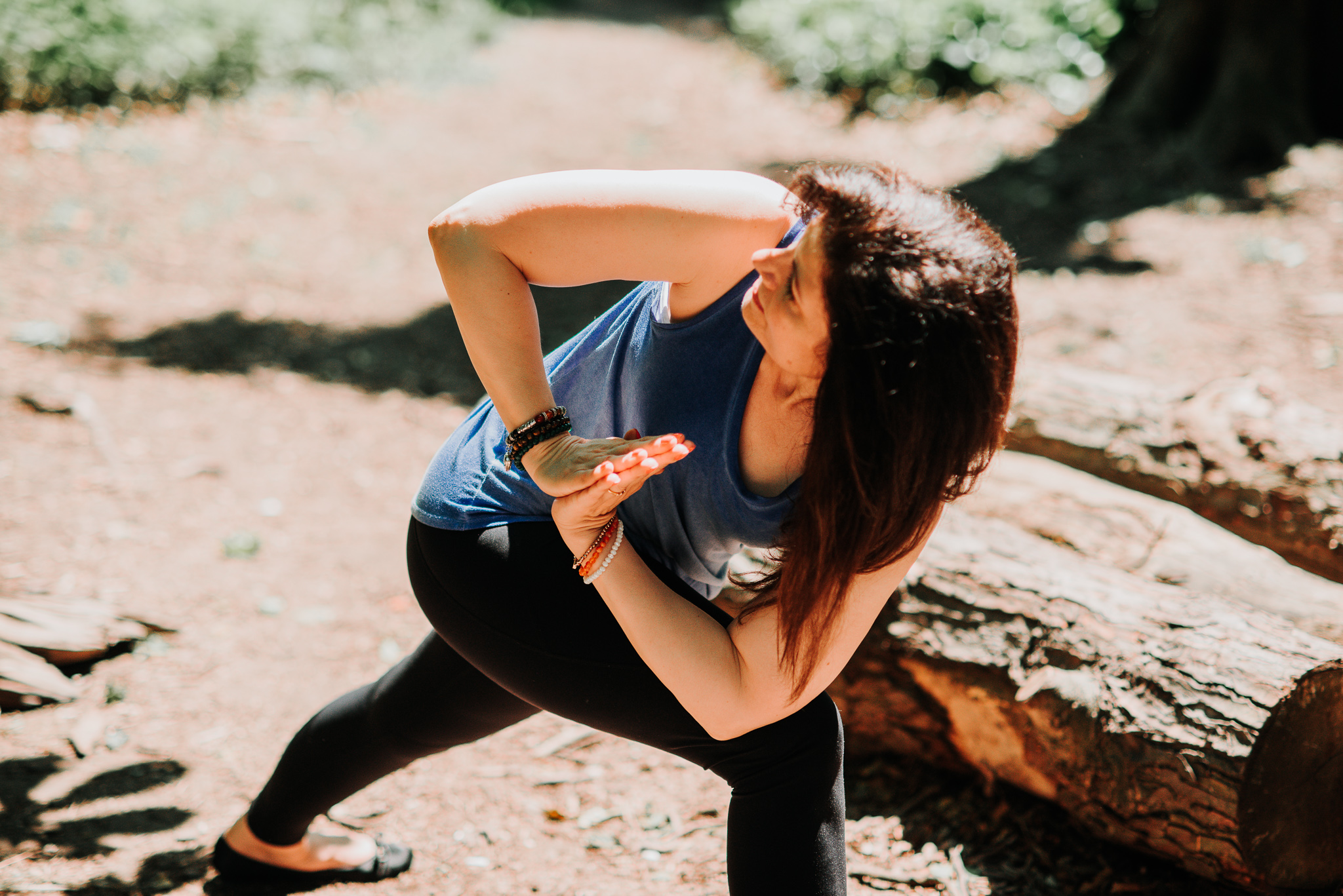Midlife is a time of life when women experience the physical, mental and emotional symptoms of the menopause. At this time, we are also faced with the uncharted territory of midlife issues such as empty nest, caring for aging parents, career and relationship management. Everything is at a crossroads and we are hit with it all at once. This can feel overwhelming. We may feel our body and life are out of our control.
This is where yoga can be helpful. Yoga is a holistic form of movement that consolidates the mind, body, breath and emotions. It can ease our symptoms of the menopause, make us feel better about ourselves and about the world around us.
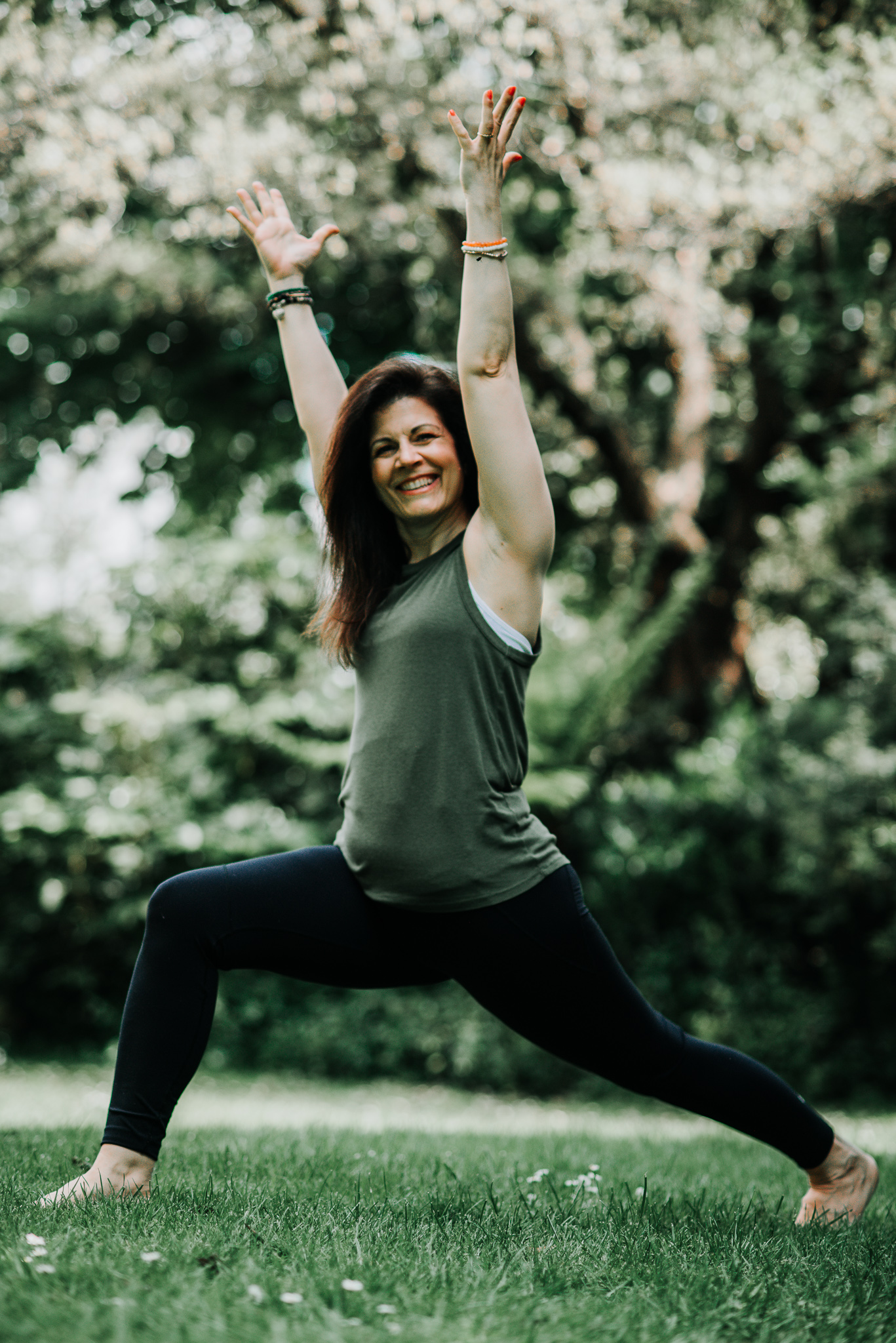
Yoga is the perfect form of movement for women in midlife and here’s why…
How does yoga fit in with midlife?
When we think of yoga, we think of the words “gentle and slow” but that is in relation to other forms of exercise. Yoga is not exercise. Yoga is movement, breathing, stillness and awareness: all of which give you a whole body and mind experience that other forms of exercise don’t. And because it’s an experience, it helps midlife women reassess their place in life. It helps them connect back to their passions and interests which had to be put on a back burner for years in order to pursue careers, raise children and make their way in life.
As for yoga being “gentle and slow” as a form of movement, this is exactly what midlife women who have not exercised in a while, need in order to ease back into exercise. Movement and exercise in midlife are important for so many reasons. Let’s explore how the decline in oestrogen in menopause affects the female body and how movement can help:
1) Menopause weakens bones which can lead to osteoporosis: a condition where bones become thinner, frail and break easily. Osteoporosis negatively impacts our quality of life. Movement and exercise help keep bones strong.
2) Menopause causes a loss of muscle mass. Muscle mass impacts how the body burns calories. The combination of a slower metabolism (the rate at which the body burns calories) due to aging and the tendency of the menopausal body to hold onto fat means that some women gain weight in midlife. Through movement and exercise, we can maintain a level of muscle mass that helps the body burn calories more effectively.
Another benefit of yoga in midlife is it’s ease of access. It requires no equipment (a yoga mat is not compulsory, a carpet will do just as well), uses body weight as resistance and, thanks to the boom in online yoga, it can be done from the comfort and privacy of home. The latter is important because many women lose confidence in midlife. They watch and feel their body change as their weight increases. They experience several physical symptoms they’ve never experienced before which can feel unsettling.
In addition, there is a widely held misconception that yoga is for people with a yoga body, that is, young, skinny and bendy. This makes yoga off putting to many women struggling with body image and confidence issues. Wearing clingy yoga clothes when we don’t feel we have a yoga body only exacerbates a woman’s lack of self confidence and stops her from walking into a yoga class.
However, the ability to join an online recorded session or a live yoga class from the safety of home with the video off can be the incentive a woman needs to start her yoga journey.
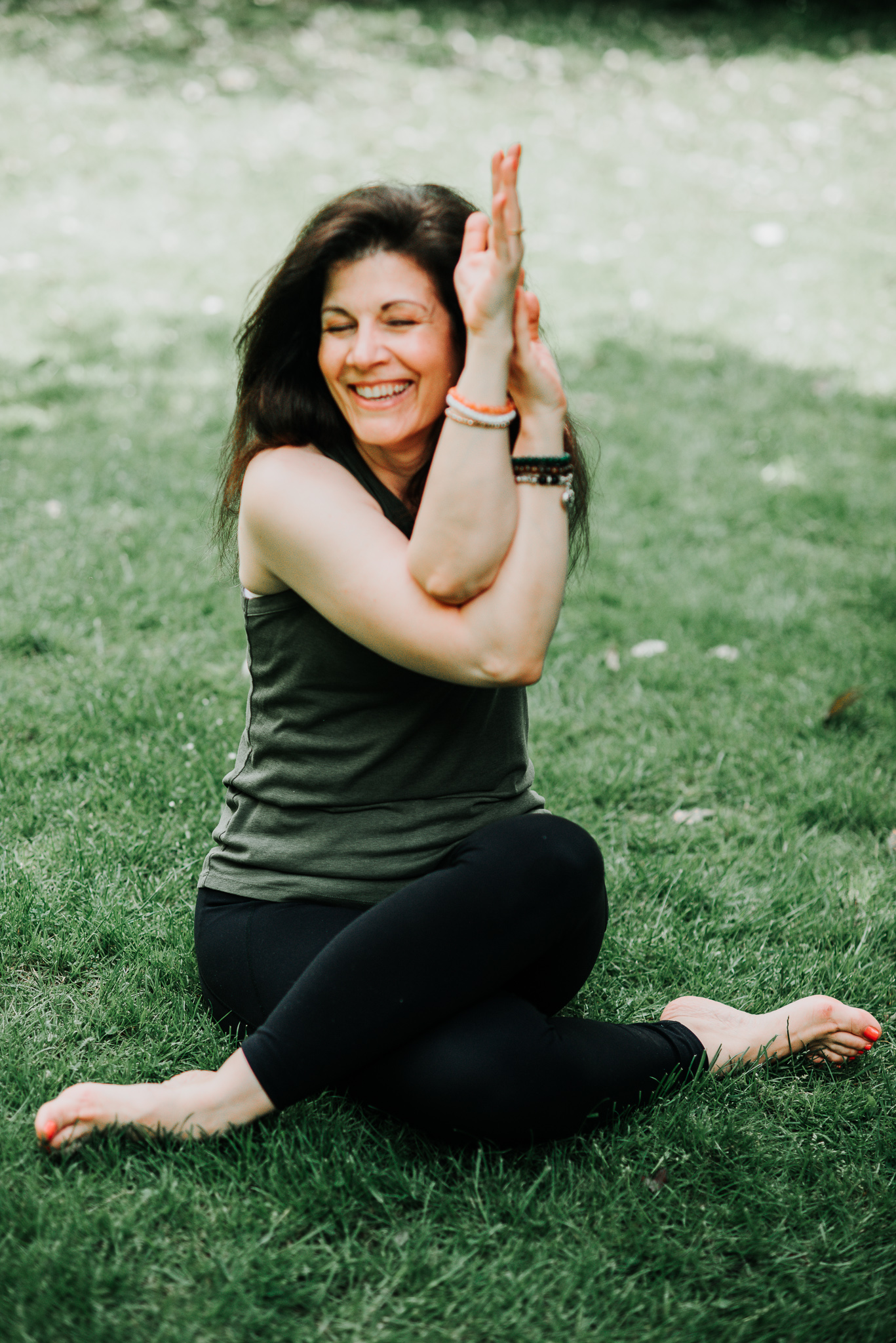
What are the benefits of yoga in midlife?
Let’s break yoga down into its parts and explore how the different aspects of yoga help us feel better in midlife:
Breathing Techniques: Most breathing techniques are calming and cooling which easily and quickly help to counteract the hot flushes or feelings of anxiety experienced in menopause. When feeling low or fatigued, energising breathing techniques can boost our mood and energy levels.
Meditation: With so much happening within us and around us in midlife, meditation is that haven of awareness and introspection which helps us keep the events in our life in perspective. Difficulty sleeping is another symptom of the menopause that many women struggle with. Meditation done before bedtime quiets the mind and lowers blood pressure setting us up for a restful sleep.
Asanas or Yoga poses: We move in yoga by flowing from pose to pose to improve our agility, coordination and to tone our body. Or we can choose stillness in a pose to improve our balance, extend our range of motion, strengthen our bones and muscles. In both cases, yoga poses are gentle on achy joints which is something many midlife women experience.
Agility, balance, coordination and range of motion diminish with age so we need to be proactive in maintaining them. Yoga can help us do that effectively.
Ways to incorporate yoga into daily life:
There is another aspect to yoga that not many people are aware of: you don’t need to spend a lot of time doing yoga to reap its benefits.
It’s not necessary to do a weekly hour-long yoga class, if you don’t have the time for it. Yoga can easily be incorporated into daily life whether at home or when out. It can be done anywhere and anytime.
A breathing technique, a yoga pose or a 2 minute meditation can have positive effects on the mind and body. They are available in the moment when you need them and they can quickly change the way you feel.
For example, cool down a hot flush with a quick and effective breathing technique. Do a balancing pose to clear the mind and feel refreshed. Release the day’s tension and sleep better with a number of yoga poses that will ease mind and body into relaxation.
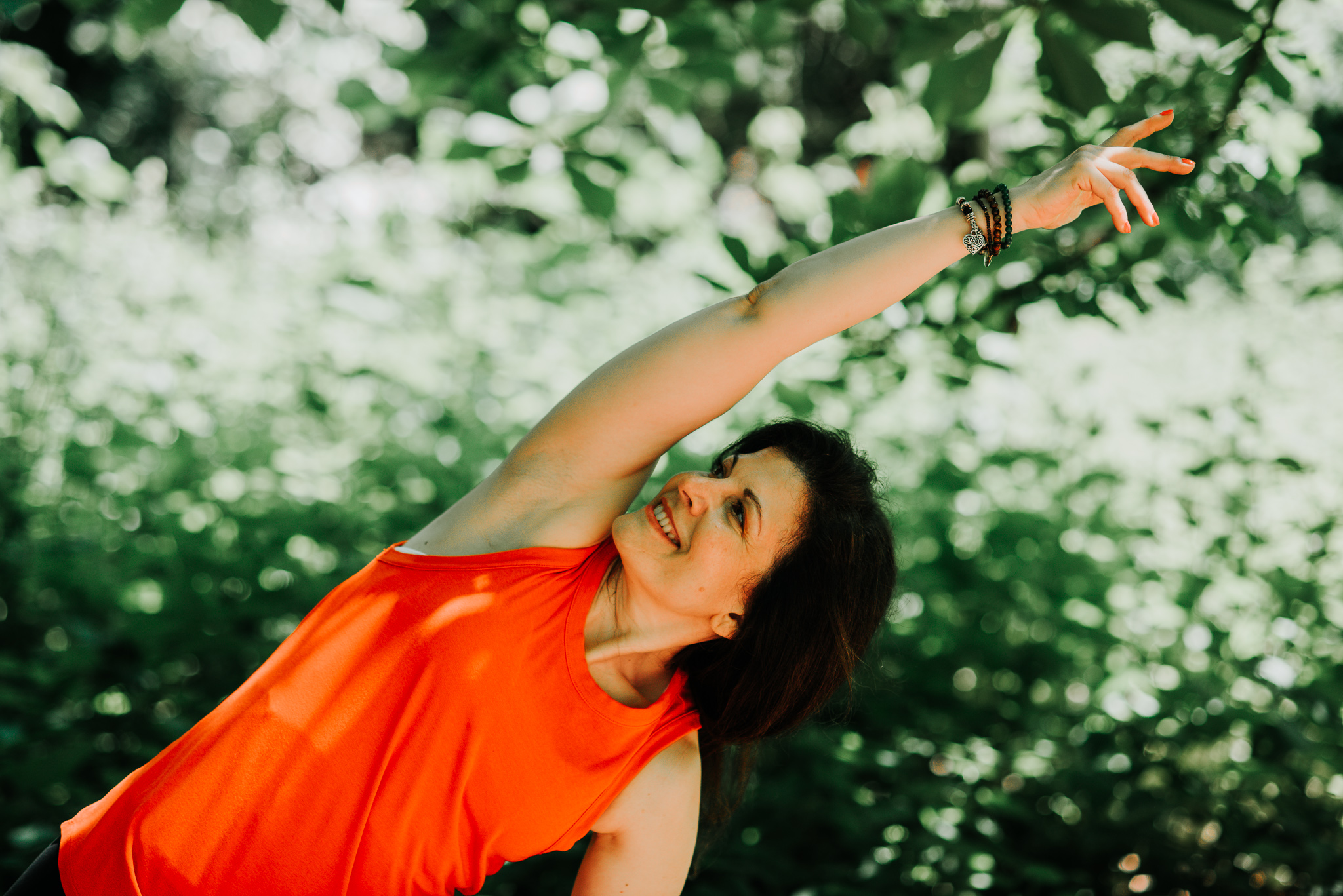
Specific poses that are beneficial in menopause:
Midlife and menopause are inseparable. Menopause affects all women. There is no escaping it nor any way to delay it nor stop it. Therefore, as women, we need to find a way to manage it. Yoga can help us manage menopause symptoms because the movements in yoga engage the whole body (including the mind and emotions) at once. Every system of the body is engaged in a yoga pose: the brain, immune, nervous and digestive systems to name a few.
Likewise, menopause affects every system of the body at once and we experience a number of symptoms all at the same time.
Yoga helps us manage the symptoms of the menopause because it engages every part of the body and, in doing so, eases all the symptoms at the same time.
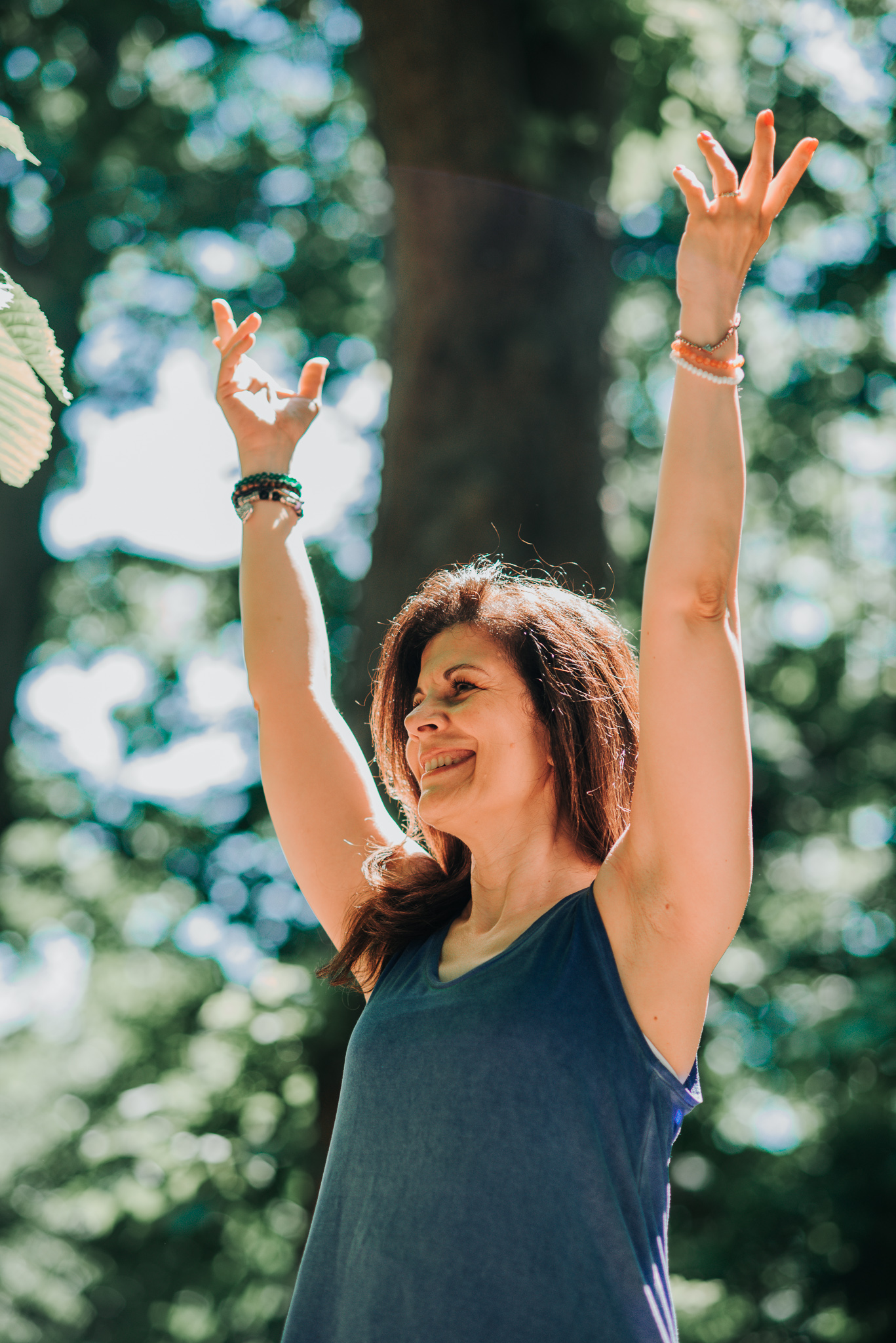
Here are some ways that yoga is beneficial in menopause:
Breathing technique – Belly Breathing: The breath is the way to manage feelings of overwhelm, anxiety and a fast beating heart such as in the case of heart palpitations and panic attacks. When we experience these, we tend to breath from our chest and our breathing becomes quick and shallow. With belly breathing, we breathe deep down into our belly which switches off our sympathetic nervous system (fight, flight, freeze mode) and switches on our parasympathetic nervous system (rest and calm mode).
To do Belly Breathing: Inhale through the nose and down to the tummy. Exhale through the nose. It can help initially, until you get comfortable with this type of breathing, to place your hands on your tummy underneath the belly button. On the inhale, feel the tummy push against the hands and on the exhale feel the tummy pull away from the hands. Do this as many times as needed to feel calm.
Tree pose: it is a standing balancing pose and we balance on one leg. This strengthens the muscles and bones of the standing leg and hip which helps to prevent osteoporosis. It quiets a busy mind because, in order to balance, we can’t focus on anything other than balancing. In addition, tree pose strengthens the parts of the brain that deal with balance and agility. This is important because we become more susceptible to falling as we age. Having good balance and being agile helps reduce the chances of falling and the risks associated with it.
Mountain pose: it is both a standing and a seated pose. It uncurls the spine, shoulders and chest. All of which curl forward naturally as we age. Mountain pose helps us avoid the stooped forward posture of aging. It also lifts the rib cage which gives the lungs space so that we can breath better and more deeply. When this happens, our immune system is boosted and the brain gets more oxygen which can help with brain fog. Mountain pose also gives space to the digestive organs so that they can do their job more efficiently. Women in menopause complain of digestive issues and mountain pose can certainly help as can the next pose…
Child’s pose: this is a restorative pose and it is a good one to do before bedtime because it releases tension from the body and quiets the mind. It is a gentle lower back and thigh stretch and, depending on the placement of the knees, an effective hip opener. It’s perfect for anyone who spends a lot of time sitting. The placement of the arms, either stretched forward or beside the body, stretches different parts of the spine which resets the nervous system and brings the body to a state of calm. The forehead on a mat or cushion is pressing on an acupressure point which also calms the nervous system. It’s for all these reasons that being in child’s pose feels so good!
So there you have it: all the reasons why midlife women should do yoga. Have you started yet?
For more stories, advice and interviews, head to the Menopause Your Way Stories hub. To browse and shop a curated edit of menopause products, visit the Menopause Your Way page on QVC.
The content of the QVC website is for information only. It is not intended as a substitute for professional medical advice, diagnosis or treatment. Always seek the advice of your doctor or other qualified health provider with any questions you may have regarding a medical condition. Never disregard professional medical advice or delay in seeking it because of something you have read on the QVC website.
We understand there’s a lot of information out there on the menopause. You can read through the NICE guidance on menopause management, as well as the NHS overview on the menopause.

